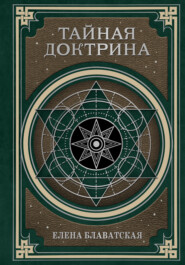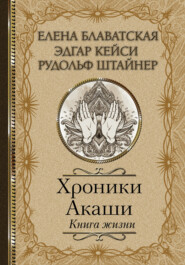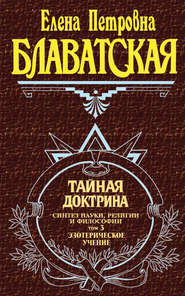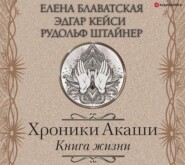По всем вопросам обращайтесь на: info@litportal.ru
(©) 2003-2024.
✖
From the Caves and Jungles of Hindostan
Настройки чтения
Размер шрифта
Высота строк
Поля
At about two P.M. when, in spite of the huge punkahs waving to and fro, we were grumbling at the heat, appeared our friend the Mahratta Brahman, whom we thought we had lost on the way. Accompanied by half-a-dozen Daknis (inhabitants of the Dekhan plateau) he was slowly advancing, seated almost on the ears of his horse, which snorted and seemed very unwilling to move. When he reached the verandah and jumped down, we saw the reason of his disappearance. Across the saddle was tied a huge tiger, whose tail dragged in the dust. There were traces of dark blood in his half opened mouth. He was taken from the horse and laid down by the doorstep.
Was it our visitor of the night before? I looked at Gulab-Sing. He lay on a rug in a corner, resting his head on his hand and reading. He knitted his brows slightly, but did not say a word. The Brahman who had just brought the tiger was very silent too, watching over certain preparations, as if making ready for some solemnity. We soon learned that, in the eyes of a superstitious people, what was about to happen was a solemnity indeed.
A bit of hair cut from the skin of a tiger that has been killed, neither by bullet, nor by knife, but by a "word," is considered the best of all talismans against his tribe.
"This is a very rare opportunity," explained the Mahratti. "It is very seldom that one meets with a man who possesses the word. Yogis and Sadhus do not generally kill wild animals, thinking it sinful to destroy any living creature, be it even a cobra or a tiger, so they simply keep out of the way of noxious animals. There exists only one brotherhood in India whose members possess all secrets, and from whom nothing in nature is concealed. Here is the body of the tiger to testify that the animal was not killed with a weapon of any kind, but simply by the word of Gulab-Lal-Sing. I found it, very easily, in the bushes exactly under our vihara, at the foot of the rock over which the tiger had rolled, already dead. Tigers never make false steps. Gulab-Lal-Sing, you are a Raj-Yogi, and I salute you!" added the proud Brahman, kneeling before the Takur.
"Do not use vain words, Krishna Rao!" interrupted Gulab-Sing. "Get up; do not play the part of a Shudra."
"I obey you, Sahib, but, forgive me, I trust my own judgment. No Raj-Yogi ever yet acknowledged his connection with the brotherhood, since the time Mount Abu came into existence."
And he began distributing bits of hair taken from the dead animal. No one spoke, I gazed curiously at the group of my fellow-travelers. The colonel, President of our Society, sat with downcast eyes, very pale. His secretary, Mr. Y–, lay on his back, smoking a cigar and looking straight above him, with no expression in his eyes. He silently accepted the hair and put it in his purse. The Hindus stood round the tiger, and the Sinhalese traced mysterious signs on its forehead. Gulab-Sing continued quietly reading his book.–
The Birza cave, about six miles from Vargaon, is constructed on the same plan as Karli. The vault-like ceiling of the temple rests upon twenty-six pillars, eighteen feet high, and the portico on four, twenty-eight feet high; over the portico are carved groups of horses, oxen, and elephants, of the most exquisite beauty. The "Hall of Initiation" is a spacious, oval room, with pillars, and eleven very deep cells cut in the rock. The Bajah caves are older and more beautiful. Inscriptions may still be seen showing that all these temples were built by Buddhists, or, rather, by Jainas. Modern Buddhists believe in one Buddha only, Gautama, Prince of Kapilavastu (six centuries before Christ) whereas the Jainas recognize a Buddha in each of their twenty-four divine teachers (Tirthankaras) the last of whom was the Guru (teacher) of Gautama. This disagreement is very embarrassing when people try to conjecture the antiquity of this or that vihara or chaitya. The origin of the Jaina sect is lost in the remotest, unfathomed antiquity, so the name of Buddha, mentioned in the inscriptions, may be attributed to the last of the Buddhas as easily as to the first, who lived (see Tod's genealogy) a long time before 2,200 B.C.
One of the inscriptions in the Baira cave, for instance, in cuneiform characters, says: "From an ascetic in Nassik to the one who is worthy, to the holy Buddha, purified from sins, heavenly and great."
This tends to convince scientists that the cave was cut out by Buddhists.
Another inscription, in the same cave, but over an-other cell, contains the following: "An agreeable offering of a small gift to the moving force [life], to the mind principle [soul], the well-beloved material body, fruit of Manu, priceless treasure, to the highest and here present, Heavenly."
Of course the conclusion is drawn that the building does not belong to the Buddhists, but to the Brahmans, who believe in Manu.
Here are two more inscriptions from Bajah caves.
"An agreeable gift of the symbol and vehicle of the purified Saka-Saka."
"Gift of the vehicle of Radha [wife of Krishna, symbol of perfection] to Sugata who is gone for ever."
Sugata, again, is one of the names of Buddha. A new contradiction!
It was somewhere here, in the neighborhood of Vargaon, that the Mahrattis seized Captain Vaughan and his brother, who were hanged after the battle of Khirki.
Next morning we drove to Chinchor, or, as it is called here, Chinchood. This place is celebrated in the annals of the Dekkan. Here one meets with a repetition in miniature of what takes place on a larger scale at L'hassa in Tibet. As Buddha incarnates in every new Dalai-Lama, so, here, Gunpati (Ganesha, the god of wisdom with the elephant's head) is allowed by his father Shiva to incarnate in the eldest son of a certain Brahman family. There is a splendid temple erected in his honor, where the avatars (incarnations) of Gunpati have lived and received adoration for over two hundred years.
This is how it happened.
About 250 years ago a poor Brahman couple were promised, in sleep, by the god of wisdom that he would incarnate in their eldest son. The boy was named Maroba (one of the god's titles) in honor of the deity. Maroba grew up, married, and begot several sons, after which he was commanded by the god to relinquish the world and finish his days in the desert. There, during twenty-two years, according to the legend, Maroba wrought miracles and his fame grew day by day. He lived in an impenetrable jungle, in a corner of the thick forest that covered Chinchood in those days. Gunpati appeared to him once more, and promised to incarnate in his descendants for seven generations. After this there was no limit to his miracles, so that the people began to worship him, and ended by building a splendid temple for him.
At last Maroba gave orders to the people to bury him alive, in a sitting posture, with an open book in his hands, and never to open his grave again under penalty of his wrath and maledictions. After the burial of Maroba, Gunpati incarnated in his first-born, who began a conjuring career in his turn. So that Maroba-Deo I, was replaced by Chintaman-Deo I. This latter god had eight wives and eight sons. The tricks of the eldest of these sons, Narayan-Deo I, became so celebrated that his fame reached the ears of the Emperor Alamgir. In order to test the extent of his "deification," Alamgir sent him a piece of a cow's tail wrapped in rich stuffs and coverings. Now, to touch the tail of a dead cow is the worst of all degradations for a Hindu. On receiving it Narayan sprinkled the parcel with water, and, when the stuffs were unfolded, there was found enclosed in them a nosegay of white syringa, instead of the ungodly tail. This transformation rejoiced the Emperor so much that he presented the god with eight villages, to cover his private expenses. Narayan's social position and property were inherited by Chintaman-Deo II., whose heir was Dharmadhar, and, lastly, Narayan II came into power. He drew down the malediction of Gunpati by violating the grave of Maroba. That is why his son, the last of the gods, is to die without issue.
When we saw him he was an aged man, about ninety years old. He was seated on a kind of platform. His head shook and his eyes idiotically stared without seeing us, the result of his constant use of opium. On his neck, ears, and toes, shone precious stones, and all around were spread offerings. We had to take off our shoes before we were allowed to approach this half-ruined relic.–
On the evening of the same day we returned to Bombay. Two days later we were to start on our long journey to the North-West Provinces, and our route promised to be very attractive. We were to see Nassik, one of the few towns mentioned by Greek historians, its caves, and the tower of Rama; to visit Allahabad, the ancient Prayaga, the metropolis of the moon dynasty, built at the confluence of the Ganges and Jumna; Benares, the town of five thousand temples and as many monkeys; Cawnpur, notorious for the bloody revenge of Nana Sahib; the remains of the city of the sun, destroyed, according to the computations of Colebrooke, six thousand years ago; Agra and Delhi; and then, having explored Rajistan with its thousand Takur castles, fortresses, ruins, and legends, we were to go to Lahore, the metropolis of the Punjab, and, lastly, to stay for a while in Amritsar. There, in the Golden Temple, built in the centre of the "Lake of Immortality," was to be held the first meeting of the members of our Society, Brahmans, Buddhists, Sikhs, etc.—in a word, the representatives of the one thousand and one sects of India, who all sympathized, more or less, with the idea of the Brotherhood of Humanity of our Theosophical Society.
Vanished Glories
Benares, Prayaga (now Allahabad), Nassik, Hurdwar, Bhadrinath, Matura—these were the sacred places of prehistoric India which we were to visit one after the other; but to visit them, not after the usual manner of tourists, a vol d'oiseau, with a cheap guide-book in our hands and a cicerone to weary our brains, and wear out our legs. We were well aware that all these ancient places are thronged with traditions and overgrown with the weeds of popular fancy, like ruins of ancient castles covered with ivy; that the original shape of the building is destroyed by the cold embrace of these parasitic plants, and that it is as difficult for the archaeologist to form an idea of the architecture of the once perfect edifice, judging only by the heaps of disfigured rubbish that cover the country, as for us to select from out the thick mass of legends good wheat from weeds. No guides and no cicerone could be of any use whatever to us. The only thing they could do would be to point out to us places where once there stood a fortress, a castle, a temple, a sacred grove, or a celebrated town, and then to repeat legends which came into existence only lately, under the Mussulman rule. As to the undisguised truth, the original history of every interesting spot, we should have had to search for these by ourselves, assisted only by our own conjectures.
Modern India does not present a pale shadow of what it was in the pre-Christian era, nor even of the Hindostan of the days of Akbar, Shah-Jehan and Aurungzeb. The neighborhood of every town that has been shattered by many a war, and of every ruined hamlet, is covered with round reddish pebbles, as if with so many petrified tears of blood. But, in order to approach the iron gate of some ancient fortress, it is not over natural pebbles that it is necessary to walk, but over the broken fragments of some older granite remains, under which, very often, rest the ruins of a third town, still more ancient than the last. Modern names have been given to them by Mussulmans, who generally built their towns upon the remains of those they had just taken by assault. The names of the latter are sometimes mentioned in the legends, but the names of their predecessors had completely disappeared from the popular memory even before the Mussulman invasion. Will a time ever come for these secrets of the centuries to be revealed? Knowing all this beforehand, we resolved not to lose patience, even though we had to devote whole years to explorations of the same places, in order to obtain better historical information, and facts less disfigured than those obtained by our predecessors, who had to be contented with a choice collection of naive lies, poured forth from the mouth of some frightened semi-savage, or some Brahman, unwilling to speak and desirous of disguising the truth. As for ourselves, we were differently situated. We were helped by a whole society of educated Hindus, who were as deeply interested in the same questions as ourselves. Besides, we had a promise of the revelation of some secrets, and the accurate translation of some ancient chronicles, that had been preserved as if by a miracle.
The history of India has long since faded from the memories of her sons, and is still a mystery to her conquerors. Doubtless it still exists, though, perchance, only partly, in manuscripts that are jealously concealed from every European eye. This has been shown by some pregnant words, spoken by Brahmans on their rare occasions of friendly expansiveness. Thus, Colonel Tod, whom I have already quoted several times, is said to have been told by a Mahant, the chief of an ancient pagoda-monastery: "Sahib, you lose your time in vain researches. The Bellati India [India of foreigners] is before you, but you will never see the Gupta India [secret India]. We are the guardians of her mysteries, and would rather cut out each other's tongues than speak."
Yet, nevertheless, Tod succeeded in learning a good deal. It must be borne in mind that no Englishman has ever been loved so well by the natives as this old and courageous friend of the Maharana of Oodeypur, who, in his turn, was so friendly towards the natives that the humblest of them never saw a trace of contempt in his demeanour. He wrote before ethnology had reached its present stage of development, but his book is still an authority on everything concerning Rajistan. Though the author's opinion of his work was not very high, though he stated that "it is nothing but a conscientious collection of materials for a future historian," still in this book is to be found many a thing undreamed of by any British civil servant.
"Let our friends smile incredulously. Let our enemies laugh at our pretensions to penetrate the world-mysteries of Aryavarta," as a certain critic recently expressed himself. However pessimistic may be our critics' views, yet, even in the event of our conclusions not proving more trustworthy than those of Fergusson, Wilson, Wheeler, and the rest of the archeologists and Sanskritists who have written about India, still, I hope, they will not be less susceptible of proof. We are daily reminded that, like unreasonable children, we have undertaken a task before which archaeologists and historians, aided by all the influence and wealth of the Government, have shrunk dismayed; that we have taken upon ourselves a work which has proved to be beyond the capacities of the Royal Asiatic Society.
Let it be so.
Let everyone try to remember, as we ourselves remember, that not very long ago a poor Hungarian, who not only had no means of any kind but was almost a beggar, traveled on foot to Tibet through unknown and dangerous countries, led only by the love of learning and the eager wish to pour light on the historical origin of his nation. The result was that inexhaustible mines of literary treasures were discovered. Philology, which till then had wandered in the Egyptian darkness of etymological labyrinths, and was about to ask the sanction of the scientific world to one of the wildest of theories, suddenly stumbled on the clue of Ariadne. Philology discovered, at last, that the Sanskrit language is, if not the forefather, at least—to use the language of Max Muller—"the elder brother" of all classical languages. Thanks to the extraordinary zeal of Alexander Csoma de Koros, Tibet yielded a language the literature of which was totally unknown. He partly translated it and partly analyzed and explained it. His translations have shown the scientific world that (1) the originals of the Zend-Avesta, the sacred scriptures of the sun-worshippers, of Tripitaka, that of the Buddhists, and of Aytareya-Brahmanam, that of the Brahmans, were written in one and the same Sanskrit language; (2) that all these three languages—Zend, Nepalese, and the modern Brahman Sanskrit—are more or less dialects of the first; (3) that old Sanskrit is the origin of all the less ancient Indo-European languages, as well as of the modern European tongues and dialects; (4) that the three chief religions of heathendom—Zoroastrianism, Buddhism and Brahmanism—are mere heresies of the monotheistic teachings of the Vedas, which does not prevent them from being real ancient religions and not modern falsifications.
The moral of all this is evident. A poor traveler, without either money or protection, succeeded in gaining admittance to the Lamaseries of Tibet and to the sacred literature of the isolated tribe which inhabits it, probably because he treated the Mongolians and the Tibetans as his brothers and not as an inferior race—a feat which has never been accomplished by generations of scientists. One cannot help feeling ashamed of humanity and science when one thinks that he whose labors first gave to science such precious results, he who was the first sower of such an abundant harvest, remained, almost until the day of his death, a poor and obscure worker. On his way from Tibet he walked to Calcutta without a penny in his pocket. At last Csoma de Koros became known, and his name began to be pronounced with honor and praise whilst he was dying in one of the poorest parts of Calcutta. Being already very ill, he wanted to get back to Tibet, and started on foot again through Sikkhim. He succumbed to his illness on the road and was buried in Darhjeeling.
It is needless to say we are fully aware that what we have undertaken is simply impossible within the limits of ordinary newspaper articles. All we hope to accomplish is to lay the foundation stone of an edifice, whose further progress must be entrusted to future generations. In order to combat successfully the theories worked out by two generations of Orientalists, half a century of diligent labor would be required. And, in order to replace these theories with new ones, we must get new facts, facts founded not on the chronology and false evidence of scheming Brahmans, whose interest is to feed the ignorance of European Sanskritists (as, unfortunately, was the experience of Lieutenant Wilford and Louis Jacolliot), but on indubitable proofs that are to be found in inscriptions as yet undeciphered. The clue to these inscriptions Europeans do not possess, because, as I have already stated, it is guarded in MSS. which are as old as the inscriptions and which are almost out of reach. Even in case our hopes are realized and we obtain this clue, a new difficulty will arise before us. We shall have to begin a systematic refutation, page by page, of many a volume of hypotheses published by the Royal Asiatic Society. A work like this might be accomplished by dozens of tireless, never-resting Sanskritists—a class which, even in India, is almost as rare as white elephants.
Thanks to private contributions and the zeal of some educated Hindu patriots, two free classes of Sanskrit and Pali had already been opened—one in Bombay by the Theosophical Society, the other in Benares under the presidency of the learned Rama-Misra-Shastri. In the present year, 1882, the Theosophical Society has, altogether, fourteen schools in Ceylon and India.
Our heads full of thoughts and plans of this kind, we, that is to say, one American, three Europeans, and three natives, occupied a whole carriage of the Great Indian Peninsular Railroad on our way to Nassik, one of the oldest towns in India, as I have already mentioned, and the most sacred of all in the eyes of the inhabitants of the Western Presidency. Nassik borrowed its name from the Sanskrit word "Nasika," which means nose. An epic legend assures us that on this very spot Lakshman, the eldest brother of the deified King Rama, cut off the nose of the giantess Sarpnaka, sister of Ravana, who stole Sita, the "Helen of Troy" of the Hindus.
The train stops six miles from the town, so that we had to finish our journey in six two-wheeled, gilded chariots, called ekkas, and drawn by bullocks. It was one o'clock A.M., but, in spite of the darkness of the hour, the horns of the animals were gilded and adorned with flowers, and brass bangles tinkled on their legs. Our waylay through ravines overgrown with jungle, where, as our drivers hastened to inform us, tigers and other four-footed misanthropes of the forest played hide-and-seek. However, we had no opportunity of making the acquaintance of the tigers, but enjoyed instead a concert of a whole community of jackals. They followed us step by step, piercing our ears with shrieks, wild laughter and barking. These animals are annoying, but so cowardly that, though numerous enough to devour, not only all of us, but our gold-horned bullocks too, none of them dared to come nearer than the distance of a few steps. Every time the long whip, our weapon against snakes, alighted on the back of one of them, the whole horde disappeared with unimaginable noise. Nevertheless, the drivers did not dispense with a single one of their superstitious precautions against tigers. They chanted mantrams in unison, spread betel over the road as a token of their respect to the Rajas of the forest, and, after every couplet, made the bullocks kneel and bow their heads in honor of the great gods. Needless to say, the ekka, as light as a nutshell, threatened each time to fall with its passenger over the horns of the bullocks. We had to endure this agreeable way of traveling for five hours under a very dark sky. We reached the Inn of the Pilgrims in the morning at about six o'clock.
The real cause of Nassik's sacredness, however, is not the mutilated trunk of the giantess, but the situation of the town on the banks of the Godavari, quite close to the sources of this river which, for some reason or other, are called by the natives Ganga (Ganges). It is to this magic name, probably, that the town owes its numerous magnificent temples, and the selectness of the Brahmans who inhabit the banks of the river. Twice a year pilgrims flock here to pray, and on these solemn occasions the number of the visitors exceeds that of the inhabitants, which is only 35,000. Very picturesque, but equally dirty, are the houses of the rich Brahmans built on both sides of the way from the centre of the town to the Godavari. A whole forest of narrow pyramidal temples spreads on both sides of the river. All these new pagodas are built on the ruins of those destroyed by the fanaticism of the Mussulmans. A legend informs us that most of them rose from the ashes of the tail of the monkey god Hanuman. Retreating from Lanka, where the wicked Ravana, having anointed the brave hero's tail with some combustible stuff set it on fire, Hanuman, with a single leap through the air, reached Nassik, his fatherland. And here the noble adornment of the monkey's back, burned almost entirely during the voyage, crumbled into ashes, and from every sacred atom of these ashes, fallen to the ground, there rose a temple.... And, indeed, when seen from the mountain, these numberless pagodas, scattered in a most curious disorderly way, look as if they had really been thrown down by handfuls from the sky. Not only the river banks and the surrounding country, but every little island, every rock peeping from the water is covered with temples. And not one of them is destitute of a legend of its own, different versions of which are told by every individual of the Brahmanical community according to his own taste—of course in the hope of a suitable reward.
Here, as everywhere else in India, Brahmans are divided into two sects—worshippers of Shiva and worshippers of Vishnu—and between the two there is rivalry and warfare centuries old. Though the neighborhood of the Godavari shines with a twofold fame derived from its being the birthplace of Hanuman and the theatre of the first great deeds of Rama, the incarnation of Vishnu, it possesses as many temples dedicated to Shiva as to Vishnu. The material of which the pagodas consecrated to Shiva are constructed is black basalt. And it is, exactly, the color of the material which is the apple of discord in this case. The black material is claimed by the Vaishnavas as their own, it being of the same color as the burned tail of Rama's ally. They try to prove that the Shivaites have no right to it. From the first days of their rule the English inherited endless lawsuits between the fighting sectarians, cases decided in one law-court only to be transferred on appeal to another, and always having their origin in this ill-omened tail and its pretensions. This tail is a mysterious deus ex machina that directs all the thoughts of the Nassik Brahmans pro and contra.
On the subject of this tail were written more reams of paper and petitions than in the quarrel about the goose between Ivan Ivanitch and Ivan Nikiphoritch; and more ink and bile were spilt than there was mud in Mirgorod, since the creation of the universe. The pig that so happily decided the famous quarrel in Gogol would be a priceless blessing to Nassik, and the struggle for the tail. But unhappily even the "pig" if it hailed from "Russia" would be of no avail in India; for the English would suspect it at once, and arrest it as a Russian spy!
Rama's bathing place is shown in Nassik. The ashes of pious Brahmans are brought hither from distant parts to be thrown into the Godavari, and so to mingle for ever with the sacred waters of Ganges. In an ancient MS. there is a statement of one of Rama's generals, who, somehow or other, is not mentioned in the Ramayana. This statement points to the river Godavari as the frontier between the kingdoms of Rama, King of Ayodya (Oude), and of Ravana, King of Lanka (Ceylon). Legends and the poem of Ramayana state that this was the spot where Rama, while hunting, saw a beautiful antelope, and, intending to make a present to his beloved Sita of its skin, entered the regions of his unknown neighbor. No doubt Rama, Ravana, and even Hanuman, promoted, for some unexplained reason, to the rank of a monkey, are historical personages who once had a real existence. About fifty years ago it was vaguely suspected that the Brahmans possessed priceless MSS. It was reported that one of these MSS. treats of the prehistoric epoch when the Aryans first invaded the country, and began an endless war with the dark aborigines of southern India. But the religious fanaticism of the Hindus never allowed the English Government to verify these reports.
The most interesting sights of Nassik are its cave-temples, about five miles from the town. The day before we started thither, I certainly did not dream that a "tail" would have to play an important part in our visit to Nassik, that, in this case, it would save me, if not from death, at least from disagreeable and perhaps dangerous bruises. This is how it happened.
As the difficult task of ascending a steep mountain lay before us, we decided to hire elephants. The best couple in the town was brought before us. Their owner assured us "that the Prince of Wales had ridden upon them and was very contented." To go there and back and have them in attendance the whole day—in fact the whole pleasure-trip—was to cost us two rupees for each elephant. Our native friends, accustomed from infancy to this way of riding, were not long in getting on the back of their elephant. They covered him like flies, with no predilection for this or that spot of his vast back. They held on by all kinds of strings and ropes, more with their toes than their fingers, and, on the whole, presented a picture of contentment and comfort. We Europeans had to use the lady elephant, as being the tamer of the two. On her back there were two little benches with sloping seats on both sides, and not the slightest prop for our backs. The wretched, undergrown youngsters seen in European circuses give no idea of the real size of this noble beast. The mahout, or driver, placed himself between the huge animal's ears whilst we gazed at the "perfected" seats ready for us with an uneasy feeling of distrust The mahout ordered his elephant to kneel, and it must be owned that in climbing on her back with the aid of a small ladder, I felt what the French call chair de poule. Our she-elephant answered to the poetical name of "Chanchuli Peri," the Active Fairy, and really was the most obedient and the merriest of all the representatives of her tribe that I have ever seen. Clinging to each other we at last gave the signal for departure, and the mahout goaded the right ear of the animal with an iron rod. First the elephant raised herself on her fore-legs, which movement tilted us all back, then she heavily rose on her hind ones, too, and we rolled forwards, threatening to upset the mahout. But this was not the end of our misfortunes. At the very first steps of Peri we slipped about in all directions, like quivering fragments of blancmange.
The journey came to a sudden pause. We were picked up in a hasty way, replaced on our respective seats, during which proceeding Peri's trunk proved very active, and the journey continued. The very thought of the five miles before us filled us with horror, but we would not give up the excursion, and indignantly refused to be tied to our seats, as was suggested by our Hindu companions, who could not suppress their merry laughter.... However, I bitterly repented this display of vanity. This unusual mode of locomotion was something incredibly fantastical, and, at the same time, ridiculous. A horse carrying our luggage trotted by Peri's side, and looked, from our vast elevation, no bigger than a donkey. At every mighty step of Peri we had to be prepared for all sorts of unexpected acrobatic feats, while jolted from one side to the other by her swinging gait. This experience, under the scorching sun, unavoidably induced a state of body and mind something between sea-sickness and a delirious nightmare. As a crown to our pleasures, when we began to ascend a tortuous little path over the stony slope of a deep ravine, our Peri stumbled. This sudden shock caused me to lose my balance altogether. I sat on the hinder part of the elephant's back, in the place of honor, as it is esteemed, and, once thoroughly shaken, rolled down like a log. No doubt, next moment I should have found myself at the bottom of the ravine, with some more or less sad loss to my bodily constitution, if it had not been for the wonderful dexterity and instinct of the clever animal. Having felt that something was wrong she twisted her tail round me, stopped instantaneously and began to kneel down carefully. But my natural weight was too much for the thin tail of this kind animal. Peri did not lose hold of me, but, having at last knelt down, she moaned plaintively, though discreetly, thinking probably that she had nearly lost her tail through being so generous. The mahout hurried to my rescue and then examined the damaged tail of his animal.
We now witnessed a scene that clearly showed us the coarse cunning, greediness and cowardice of a low-class Hindu, of an outcast, as they are denominated here.
The mahout very indifferently and composedly examined Peri's tail, and even pulled it several times to make sure, and was already on the point of hoisting himself quietly into his usual place, when I had the unhappy thought of muttering something that expressed my regret and compassion. My words worked a miraculous transformation in the mahout's behavior. He threw himself on the ground, and rolled about like a demoniac, uttering horrible wild groans. Sobbing and crying he kept on repeating that the Mam-Sahib had torn off his darling Peri's tail, that Peri was damaged for ever in everybody's estimation, that Peri's husband, the proud Airavati, lineal descendant of Indra's own favourite elephant, having witnessed her shame, would renounce his spouse, and that she had better die.... Yells and bitter tears were his only answer to all remonstrances of our companions. In vain we tried to persuade him that the "proud Airavati" did not show the slightest disposition to be so cruel, in vain we pointed out to him that all this time both elephants stood quietly together, Airavati even at this critical moment rubbing his trunk affectionately against Peri's neck, and Peri not looking in the least discomfited by the accident to her tail. All this was of no avail! Our friend Narayan lost his patience at last. He was a man of extraordinary muscular strength and took recourse to a last original means. With one hand he threw down a silver rupee, with the other he seized the mahout's muslin garment and hurled him after the coin. Without giving a thought to his bleeding nose, the mahout jumped at the rupee with the greediness of a wild beast springing upon its prey. He prostrated himself in the dust before us repeatedly, with endless "salaams," instantly changing his deep sorrow into mad joy. He gave another pull at the unfortunate tail and gladly declared that, thanks to the "prayers of the sahib," it really was safe; to demonstrate which he hung on to it, till he was torn away and put back on his seat.
"Is it possible that a single, miserable rupee can have been the cause of all this?" we asked each other in utter bewilderment.
"Your astonishment is natural enough," answered the Hindus. "We need not express how ashamed and how disgusted we all feel at this voluntary display of humiliation and greed. But do not forget that this wretch, who certainly has a wife and children, serves his employer for twelve rupees a year, instead of which he often gets nothing but a beating. Remember also the long centuries of tyrannical treatment from Brahmans, from fanatical Mussulmans, who regard a Hindu as nothing better than an unclean reptile, and, nowadays, from the average Englishman, and maybe you will pity this wretched caricature of humanity."
But the "caricature" in question evidently felt perfectly happy and not in the least conscious of a humiliation of any kind. Sitting on the roomy forehead of his Peri, he was telling her of his unexpected wealth, reminding her of her "divine" origin, and ordering her to salute the "sahibs" with her trunk. Peri, whose spirits had been raised by the gift of a whole stick of sugar-cane from me, lifted her trunk backwards and playfully blew into our faces.
On the threshold of the Nassik caves we bid good-bye to the modern pigmy India, to the petty things of her everyday life, and to her humiliations. We re-entered the unknown world of India, the great and the mysterious.
The main caves of Nassik are excavated in a mountain bearing the name of Pandu-Lena, which points again to the undying, persistent, primaeval tradition that ascribes all such buildings to the five mythical (?) brothers of prehistoric times. The unanimous opinion of archaeologists esteems these caves more interesting and more important than all the caves of Elephanta and Karli put together. And, nevertheless—is it not strange?—with the exception of the learned Dr. Wilson, who, it may be, was a little too fond of forming hasty opinions, no archaeologist has, as yet, made so bold as to decide to what epoch they belong, by whom they were erected, and which of the three chief religions of antiquity was the one professed by their mysterious builders.

















